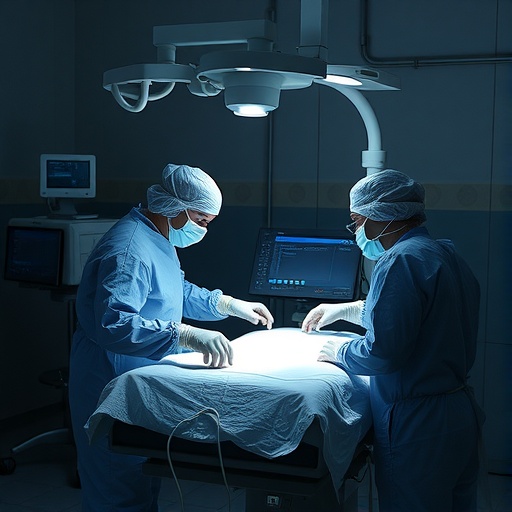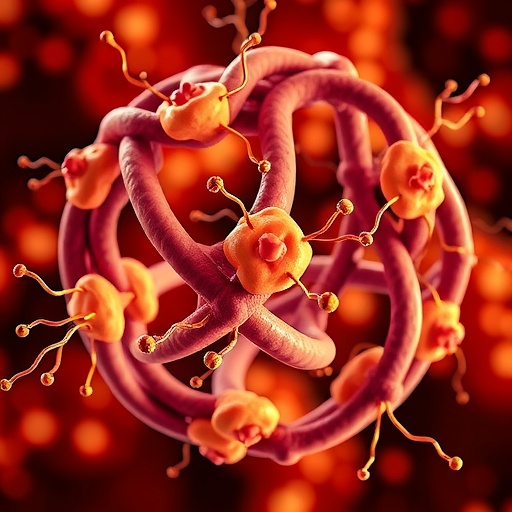
In a groundbreaking and unsettling incident reported recently, researchers have documented a rare but critical case highlighting the occupational hazards associated with postmortem examinations. This case involves the suspected transmission of group A Streptococcus (GAS) from the corpse of a deceased individual suffering from streptococcal toxic shock syndrome (STSS) to an autopsy technician. The implications of this finding extend far beyond the forensic pathology community, raising urgent concerns about biosafety protocols, infection control measures, and the risks faced by healthcare professionals handling infectious remains.
Group A Streptococcus, a bacterium commonly found in the human throat and on skin, is known for causing a range of illnesses from mild pharyngitis to life-threatening conditions, such as necrotizing fasciitis and streptococcal toxic shock syndrome. The latter represents an acute systemic infection characterized by rapid onset of shock and multi-organ failure, necessitating emergent clinical intervention. While GAS is widely recognized as a community-acquired pathogen, its transmission dynamics in the forensic and postmortem context remain underexplored and poorly understood.
The documented case details a scenario wherein an autopsy worker, involved in the examination of a deceased individual diagnosed with STSS, developed symptoms consistent with GAS infection subsequent to their exposure. The postmortem examination entailed invasive procedures, including tissue dissection and secretion sampling, both of which involve direct contact with potentially contaminated biological materials. Despite the use of standard personal protective equipment (PPE), the autopsy worker presented with clinical manifestations days following the procedure, prompting a thorough investigation into the source of infection.
.adsslot_J8mrMzV7Xe{width:728px !important;height:90px !important;}
@media(max-width:1199px){ .adsslot_J8mrMzV7Xe{width:468px !important;height:60px !important;}
}
@media(max-width:767px){ .adsslot_J8mrMzV7Xe{width:320px !important;height:50px !important;}
}
ADVERTISEMENT
This incident is unique because it provides some of the first evidence supporting the possibility of direct pathogen transmission from a dead body, a modality often underestimated in biosafety protocols in mortuary settings. Traditionally, the risk of transmission during autopsy has been emphasized more in the context of bloodborne pathogens such as HIV, hepatitis B, and C, rather than bacterial infections like GAS. However, this case underscores a critical gap in infection control strategies and requires a reevaluation of standard precautions during forensic investigations.
Analytical procedures, including microbiological cultures and molecular typing, confirmed the presence of genetically identical strains of group A Streptococcus in both the deceased and the symptomatic autopsy worker. This concordance strongly implicates the corpse as the source of the infection. Furthermore, the timeline of symptom onset and the absence of other plausible exposure routes corroborate the hypothesis of transmission during autopsy procedures.
From a microbiological standpoint, GAS is known for its virulence factors such as the M protein, streptolysins, and superantigen exotoxins, which contribute to its ability to invade tissue rapidly and evade host immune responses. The streptococcal toxic shock syndrome particularly results from the production of superantigens that trigger excessive immune activation, leading to systemic inflammation and subsequent shock. The fact that such virulent bacteria can persist and remain infectious in cadaveric tissues challenges existing assumptions about pathogen viability postmortem and demands further research.
In addition to clinical concerns, this case holds profound forensic significance. Autopsy workers and pathologists routinely handle infectious bodies under the assumption that pathogens lose their virulence or infectivity rapidly after host death. However, this finding questions these assumptions, suggesting that certain bacteria can remain sufficiently viable to cause severe infections, necessitating revisions in autopsy room decontamination practices and PPE usage guidelines.
The institutional response to this event included a temporary halt of autopsy examinations of STSS-diagnosed cases, followed by rigorous training and implementation of enhanced biosafety measures. The reported case has stimulated considerable debate within the medical and forensic communities regarding the adequacy of current recommendations and the potential need for novel antimicrobial or sterilization protocols in mortuary environments.
Moreover, the occupational health implications are far-reaching. Autopsy personnel’s exposure to potentially infectious cadavers without fully understanding the risks exposes a gap in occupational safety. This calls for increased awareness campaigns, mandatory vaccination updates where applicable, and possibly the development of rapid detection protocols to ascertain the infectious status of bodies prior to invasive examinations.
The broader public health perspective is also noteworthy. Although transmission of GAS from dead bodies to living individuals is rare, this event provides a cautionary tale that infection control should not be relaxed postmortem. In epidemic or outbreak scenarios involving highly virulent pathogens, postmortem transmission may contribute to disease propagation among healthcare workers, mortuary staff, and others involved in handling remains.
The case may also encourage innovation in bio-containment facilities within forensic pathology departments. The design of autopsy suites, ventilation systems, and waste disposal protocols may require reevaluation to minimize aerosolization or contact transmission of bacterial pathogens during necropsy. The integration of advanced air filtration technologies and biohazard containment practices could become standard practice to prevent similar occurrences.
On a scientific front, this report spurs ongoing research into pathogen survival kinetics postmortem. Understanding how long and under what conditions GAS and other bacteria remain viable in corpses could redefine standard forensic toxicology and pathology timelines. Additionally, the investigation into potential bacterial biofilms or intracellular reservoirs within tissues may reveal mechanisms allowing prolonged persistence and infectivity after death.
Given the rarity and severity of this case, it also underlines the need for interdisciplinary collaboration among microbiologists, pathologists, infection control specialists, and occupational health experts. Such alliances can aid in the development of comprehensive guidelines that ensure safety without compromising the critical functions of forensic investigations vital to legal and medical justice.
In conclusion, this compelling case of suspected group A Streptococcus transmission from a deceased individual to an autopsy worker presents a paradigm shift in how infectious risks are assessed and managed in forensic settings. It challenges long-held perceptions about pathogen inactivation postmortem and drives home the imperative for stringent biosafety protocols, innovative protective strategies, and continuous surveillance to safeguard those serving at the interface of medicine, law, and public health.
As our understanding of pathogen behavior beyond the living context advances, so must our commitment to protecting frontline workers who navigate these challenging environments. This report not only amplifies the voice calling for reassessment and reform but also potentially marks the beginning of new, safer practices that can secure the health of autopsy workers worldwide against unseen microbial threats lurking beyond death.
Subject of Research: Suspected transmission of group A Streptococcus from a deceased individual with streptococcal toxic shock syndrome to an autopsy worker.
Article Title: A case of suspected transmission of group A Streptococcus from a dead body with streptococcal toxic shock syndrome to an autopsy worker.
Article References:
Okaba, K., Motomura, A., Saito, N. et al. A case of suspected transmission of group A Streptococcus from a dead body with streptococcal toxic shock syndrome to an autopsy worker. Int J Legal Med (2025). https://doi.org/10.1007/s00414-025-03545-8
Image Credits: AI Generated
Tags: biosafety protocols in pathologyforensic pathology concernsGroup A Streptococcus transmissionhealthcare worker safetyinfection control in forensicsinvasive procedures in autopsyoccupational hazards in autopsypostmortem examination riskspublic health implications of STSSrare infectious disease transmissionstreptococcal toxic shock syndromesystemic infection risks





